Xiaomi Mi Mix 3 Review
Xiaomi Mi Mix 3 Review
Solving 2018's problems in 2019
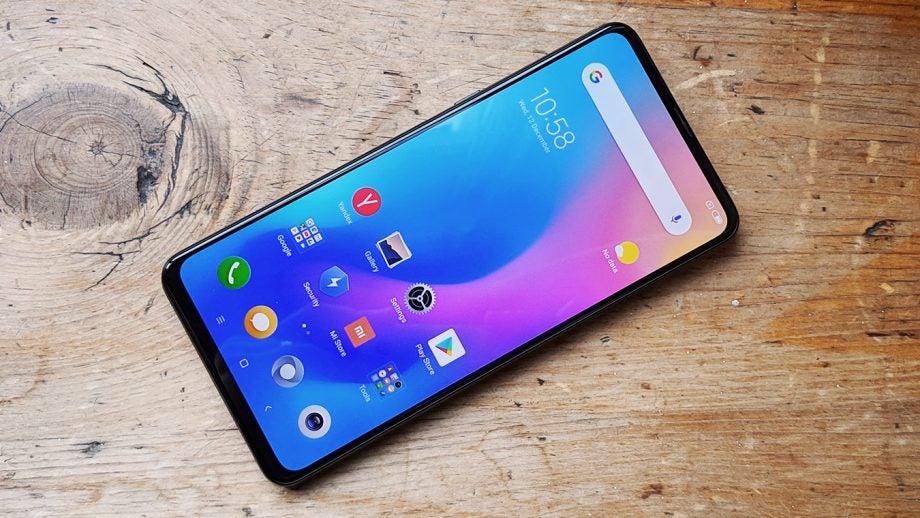
Verdict
The Mi Mix 3 is an impressively high-end device for the price. However, its unique design solves a problem that newer phones have since managed to more elegantly.
Pros
- Fantastic longevity
- Great performance
- Attractive design and finish
- Pleasing near bezel-free display
Cons
- Fingerprint magnet
- Thick and heavy build
- Poor HDR content support
- Sliding mechanism has lost its relevance
Key Specifications
- Review Price: £499
- Qualcomm Snapdragon 845
- 6GB RAM/128GB storage
- Fast wired charging (up to 18W)
- Fast wireless charging (up to 10W)
- Dual 12-megapixel rear cameras
- Android 9.0 Pie w/ MIUI 10
- 3200mAh battery
- Ceramic back
- 6.39-inch 19.5:9 1080x2340 Full HD+ AMOLED display
- Slide-out dual 24/2-megapixel front cameras
What is the Xiaomi Mi Mix 3?
Xiaomi’s Mi Mix smartphone range appears to have been specifically engineered to put the kibosh on the bezel.
The original Mi Mix, which launched back in late 2016, showcased a 17:9 screen with three razor-thin bezels and a notable chin, while this latest device showcases an evolution on that same concept while also side-stepping the dreaded notch that so many of 2018’s smartphone-makers conceded to.
The Mi Mix 3 is packed with a familiar gamut of internal hardware, with a focus on design and engineering. Highlights include a slide-out dual front-facing camera arrangement, a ceramic-backed body and fast wireless charging.
Design
Xiaomi is setting a precedent with phones like the Mi Mix 3, which boast premium materials and impressive build quality at prices that consistently defy expectation.
In the case of the Mi Mix 3 specifically, the phone’s form consists of two key parts – a display that manually slides down to reveal the dual front-facing cameras and an eye-catching ceramic back. For the phone’s UK release it’s being made available in Onyx Black, which adopts a mirror-like silvery finish that differs from conventional glass, and Sapphire Blue.
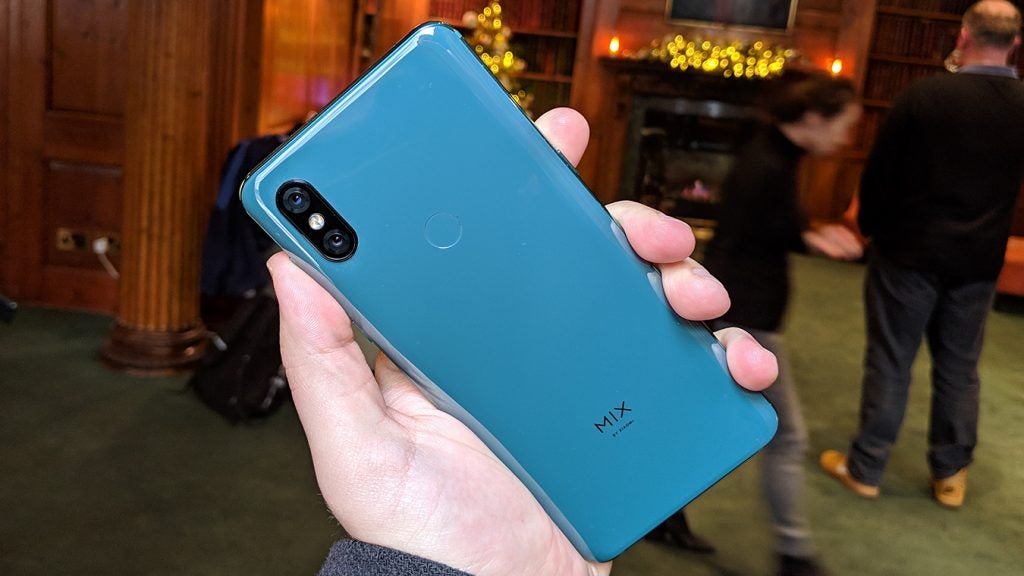
The Mi Mix 3 in Jade Green is particularly unique
There’s also a Jade Green version that was on show during my initial hands-on session that looked particularly great, but right now it isn’t set to land in the UK. Neither is the special Forbidden City Blue edition. Sigh.
That ceramic back plays host to a fingerprint sensor (no in-display option here) and it also facilitates the phone’s wireless charging. Xiaomi even includes a 10W fast wireless charging pad in-box, alongside an 18W fast-charging wired USB-C adapter.
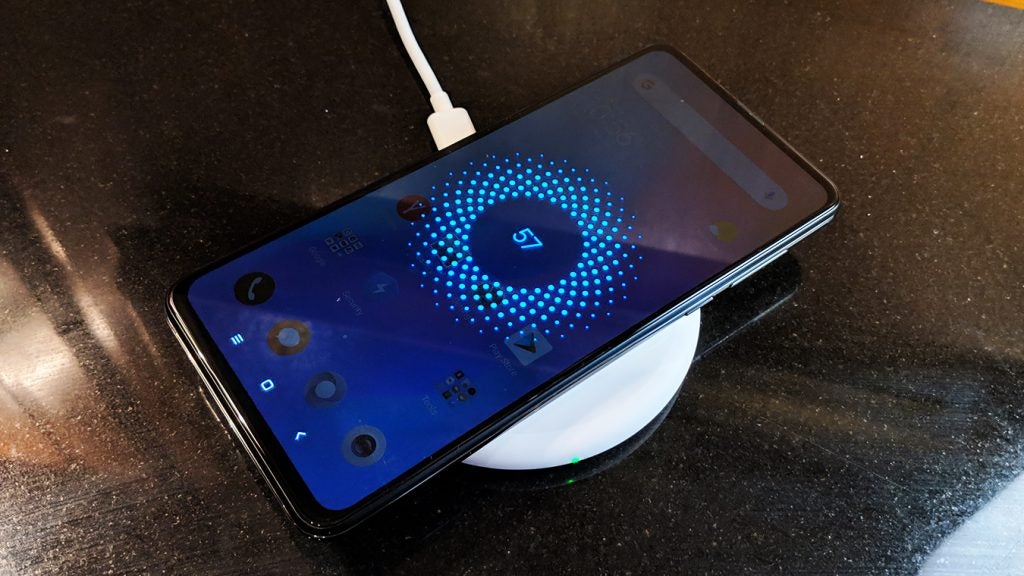
The Mi Mix 3 on Xiaomi’s new 10W wireless charging pad, which comes in the box
Despite the exotic material choices, the back of the phone is no-less prone to fingerprints than the assortment of glass-backed phones you can currently buy.
The Onyx Black model is impressively well-engineered though; with a tight tolerance along that sliding display and exceptional levels of fit and finish elsewhere too. Add a mechanism like the one on the Mix 3, however, and there’s inevitably going to be an added amount of heft that has to be placed upon the design.
When I heard that the phone rocked a 6.39-inch display I expected it to be big, but add in that sliding mechanism and this phone is also thick (at 8.46mm) and heavy (at 218g). The size and weight make it far more noticeable in a pocket than most other current-gen phones around the same size; opt to stick it in a bag though and you’ll have nullified that particular complaint.
I was also hoping for a standard headphone jack with a phone as thick as this but no such luck. Xiaomi does, at least, include a USB-C to 3.5mm headphone adapter in-box, so unlike Apple’s most recent iPhones, you’ll don’t have to pay extra if you don’t already own a pair of Type-C buds or Bluetooth headphones.
Related: Best wireless headphones
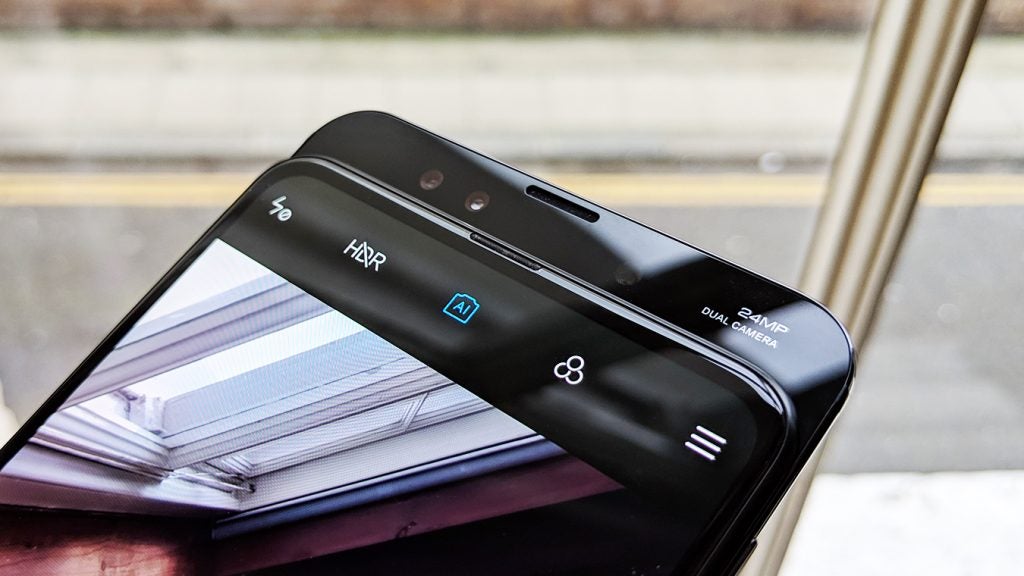
The concealed cameras look great when the phone is box fresh but after a week of being in your pocket, this section picks up dust all too easily
The display slides down with a satisfying ‘clunk’ as the strong neodymium magnets hold it in place, although I would say that, at least when the phone is new, these magnets sometimes seem almost too strong for the action to truly feel as effortless and as comfortable as Xiaomi likely intended.
To the company’s credit, opting for a manual pop-up mechanism in place of a powered one, such as on the Oppo Find X, removes some of the reliability concerns that come with such a design choice. During the phone’s original launch, Xiaomi representatives even jested that the phone’s sliding design makes it a suitable alternative to a fidget spinner. To further instil confidence, the whole mechanism is rated for an impressive 300,000 actuations, which by comparison to the spring-loaded sliders of old (think the Nokia 5300) is three times more reliable.
Another sacrifice that most high-end phones without moving parts don’t suffer from is a complete lack of dust and water resistance. Not the biggest issue, as the Mi Mix 3 sports bodywork that should be treated with care anyway, but something to bear in mind, particularly as sand or grit working its way into that mechanism could become a real problem.
Screen
The phone’s proportions fall to a far more slender frame compared to its namesake, the original Mi Mix; with a tall 6.39-inch 19.5:9 aspect ratio display that offers next to zero bezel and only the hint of a chin, giving the phone an impressive 93.4% screen-to-body ratio.
Just having that notch-free, near edge-to-edge viewing experience makes watching anything on the Mi Mix 3 feel rather special. On paper, things look promising too, not least because of the AMOLED panel at play and the fact that it promises up to an impressive 600 nits brightness, pleasing contrast and support for HDR.
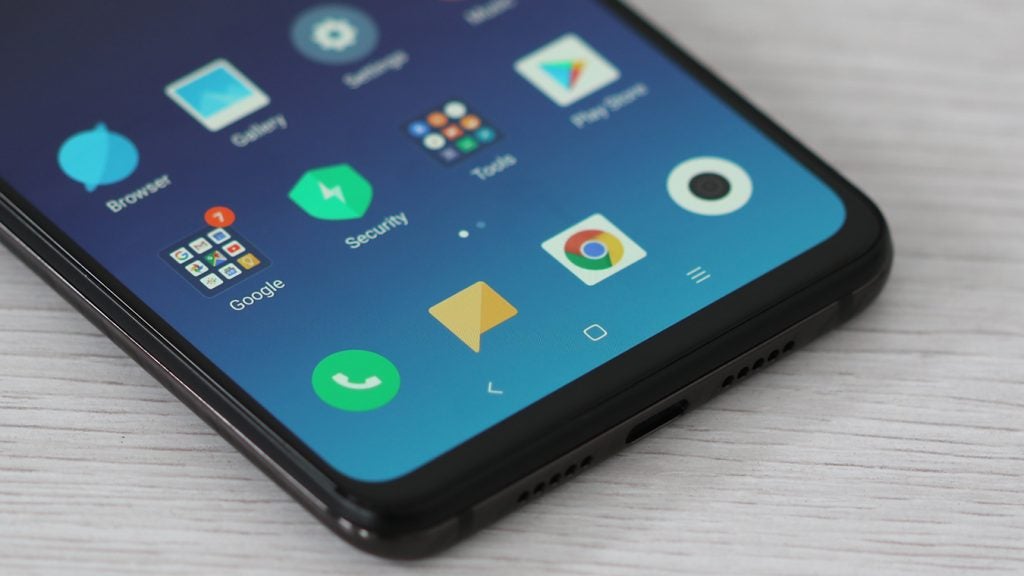
With regards to the first two claims, I’ve got no complaints. The Samsung-made screen looks bright and punchy, with a reliable outdoor viewing experience that doesn’t appear to suffer from any notable brightness drop-off or colour distortion when viewed off-axis.
Swapping out LCD technology as found on its predecessors, for AMOLED brings obvious benefits, like greater contrast and rich colours but also grants the phone an always-on function so you can glance to check the time or to see if there are any notifications with minimal power drain to worry about.
Pixel perfect: This is by no means the sharpest screen on the market but it’s unquestionably easy on the eye nonetheless
As for viewing fidelity, the Full HD+ (2340 x 1080) resolution paired with the phone’s large screen size offers up a respectable 403ppi pixel density and in real-world use, it seems perfectly crisp and clear for my needs (gaming, watching Netflix and YouTube etc). It’s those claims of HDR that people need to be wary of.
Despite offering up high dynamic range-viewing in YouTube you won’t find it working in Netflix. In fact, based on the fact that the phone only supports the Widevine L3 DRM protocol (and not L1 as on the likes of many other phones), Netflix doesn’t even offer native HD playback, let alone HDR playback on supported content. This could always be added through a software update but it’s a shame it’s not there to begin with.
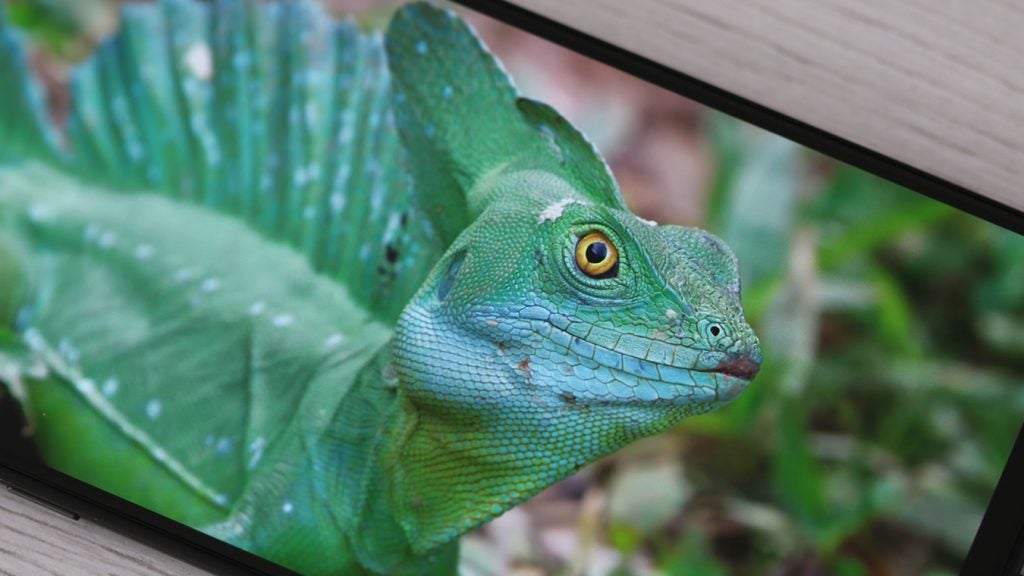
For many, the Mi Mix 3’s large screen alone will be enough of a great viewing experience but for some, a lack of HD and HDR playback support from such a popular service is a big hit. The Mi Mix 3 isn’t alone in this shortcoming either; it’s an issue that previous Xiaomi devices and the likes of OnePlus have come under fire for too.
In general use, the display also affords you an impressive amount of flexibility and control, more than most other phones out there. You can set the scale size of one-handed mode, which when enabled, scales the whole of the phone’s UI down into the bottom left or right-hand corner for easier one-handed use.
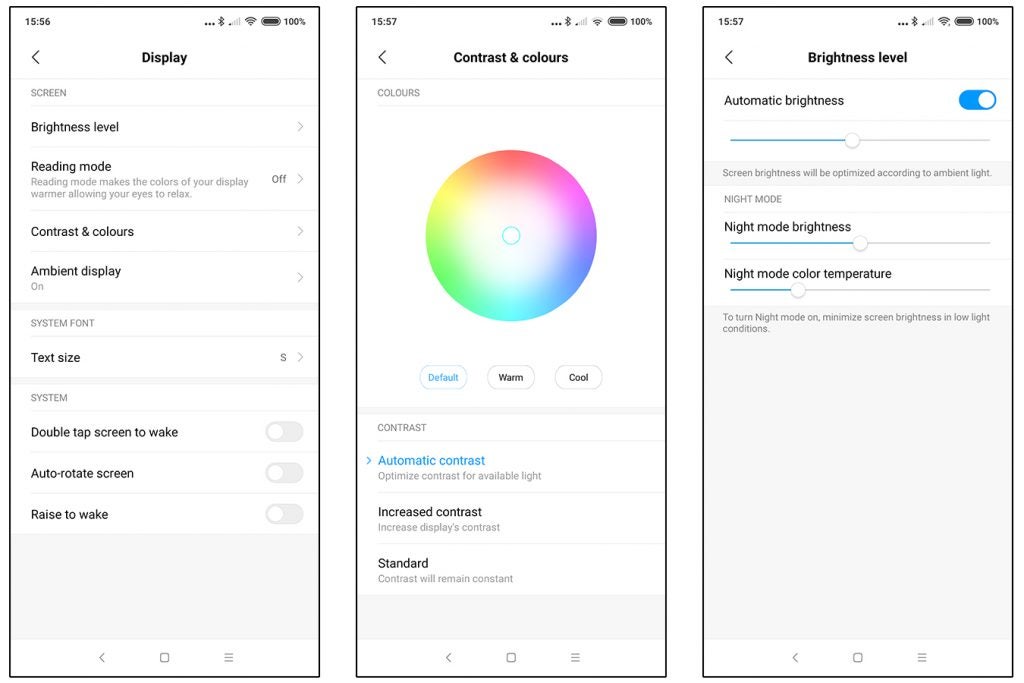
There are also a number of display gestures on offer, like double-tap-to-wake and raise-to-wake, as well as control over both colour and brightness settings for day and night viewing,
Performance
The Mi Mix 3’s spec sheet is fronted by a Qualcomm Snapdragon 845 SoC, 6GB of RAM and 128GB of non-expandable storage, which in its own right is a wholly respectable combination (the phone also supports dual nanoSIMs).
In China you can pick the Mi Mix 3 up with 8GB of RAM and up to 256GB of storage. There’s even a version with a seemingly excessive 10GB of RAM, but in my testing, there’s zero need for more than what’s on offer from the UK model.
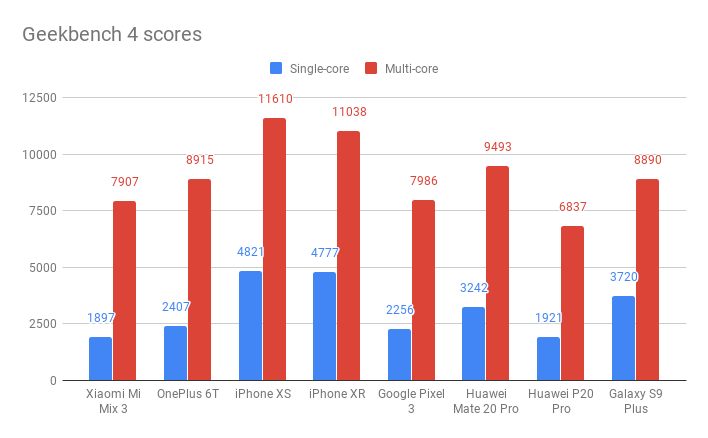
It feels as fast and as fluid as any current-gen flagship phone, with smooth gaming performance, seamless multitasking, effortless split-screen usage and everything else you’d expect from such capable internals. If I had to nitpick, entering and exiting the camera app, which usually requires a 90-degree rotation of the phone, is one notable exception
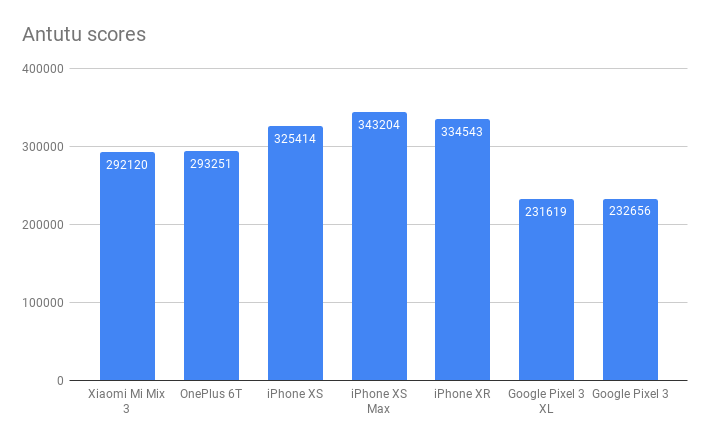
Benchmarking scores from the likes of Geekbench 4 and Antutu place it amongst the best Android flagships currently available. It doesn’t lead the pack but these scores should instil added confidence that this phone should satiate most user’s needs over the average two-year lifespan.
Beyond raw power, the phone’s voice call quality seems fairly par for the course. Like other phones that have pushed the limited of screen-to-body ratios, the earpiece and speaker usually end up firing upward and outward, rather than directly at your ear. The same is true here, meaning that although incoming voices sound clear, the chance of those nearby also hearing what’s being said is pretty strong.
Related: Best phones
Software
The software experience should be pretty familiar for those who’ve used any recent Xiaomi phone, with the company’s latest MIUI 10 (Global build) user experience atop the most recent Android release, version 9.0 Pie. If you’re not familiar with MIUI, however, there’s a definite learning curve before interaction will become familiar.
The inability to add an apps drawer aside, MIUI offers impressive depth when it comes to customisation of the user experience. You have control over everything from home screen transition effects to the style of battery indicator in use. Features like Quick Ball and gesture controls allow for easy access to specific features, actions or apps of your choosing.
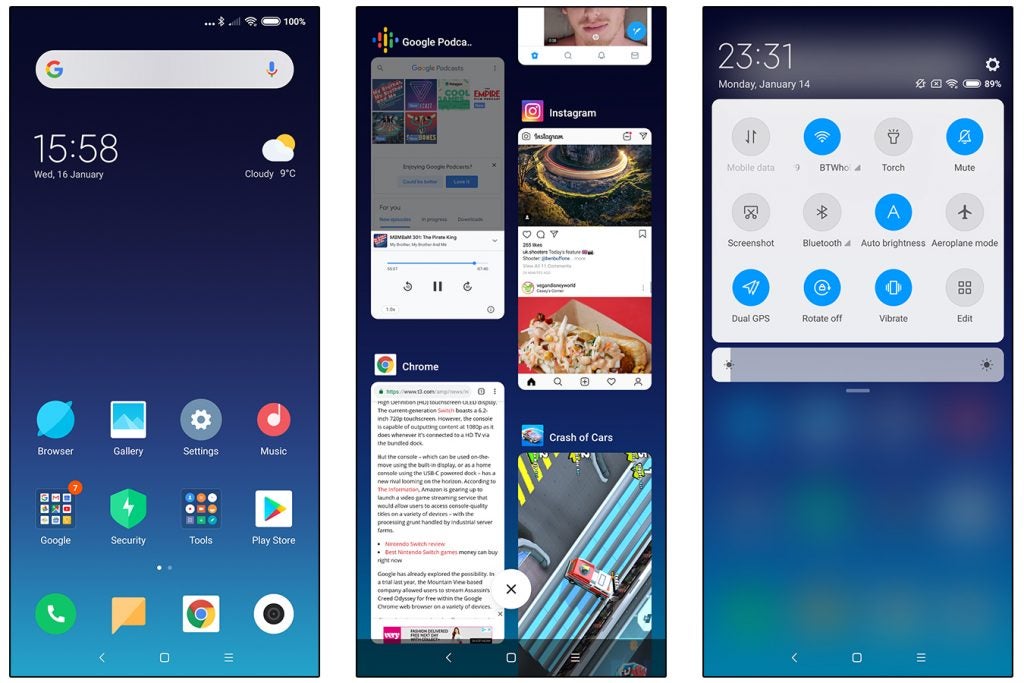
The Mi Mix 3 features a hardware key on its left side, just like Samsung’s dedicated Bixby key, however, unlike Sammy’s offering, the AI button can be set to launch the camera, change viewing mode, open the last app used and more. It can actually pull off three distinct actions, two of which are programmable: a simple tap launches the Google Assistant, while a press and hold and a double-press can both be set to perform other functions. It’s a powerful and appreciated inclusion.
The phone’s physical slider can be programmed too. By default, it launches the front-facing camera but dive into ‘slider settings’ and you also have the option to open any app installed on your device or access slider tools – a bevvy of handy widgets that includes a timer, weather information and the like. The same menu also lets you tailor the noises that play every time you slide the phone’s screen up and down.
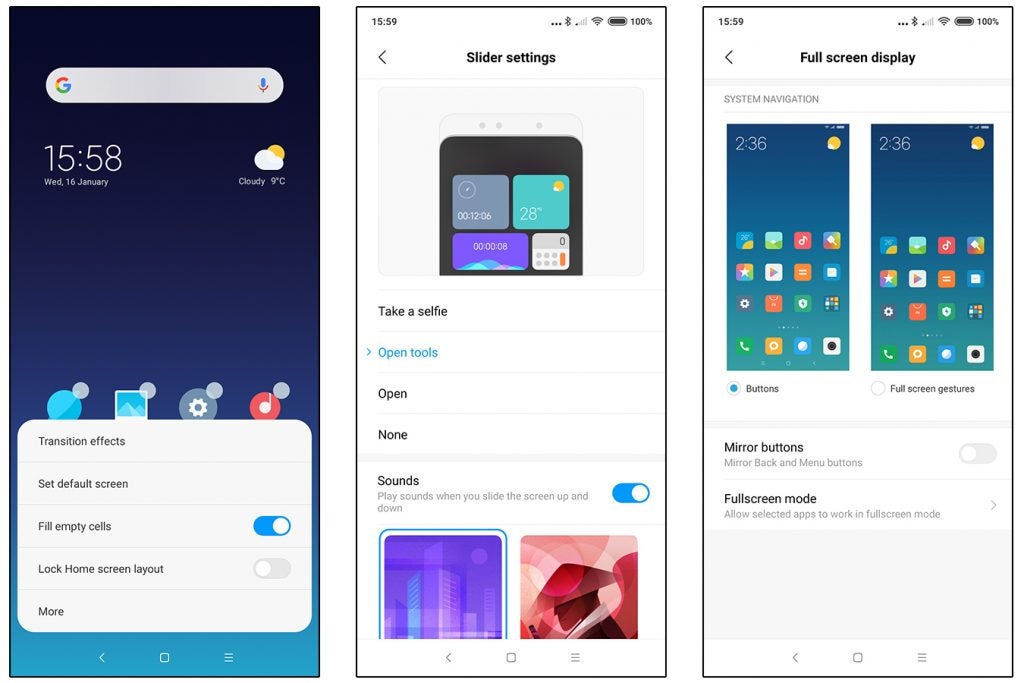
Two omissions that I hope Xiaomi decides to add in at a later date include some form of digital wellness functionality – a feature native to Android Pie but missing in Xiaomi’s user experience – and Themes. While this feature is accessible if you set the phone to other regions, right now, UK devices won’t have access to Xiaomi’s theme store, which is filled with tons of wallpaper and app icon pairings that let you quickly change up the look and feel of your device instantly.
Camera
I had a decent idea of what the Mi Mix 3’s primary dual cameras were going to be capable of by way of Trusted Reviews’ Xiaomi Mi 8 Pro review. As Xiaomi confirmed, both devices use the same underlying hardware: dual 12-megapixel sensors with 4-axis OIS and 2x lossless optical zoom. However, the Mi Mix 3 promises to deliver an even more impressive imaging experience thanks to improved software and image processing.
It even boasts a DxO Mark mobile score of 103, placing it joint third with the likes of the Samsung Galaxy Note 9 – however, how much value you place behind into such scores is a matter of preference (a high DxO score ≠ a better overall camera experience).
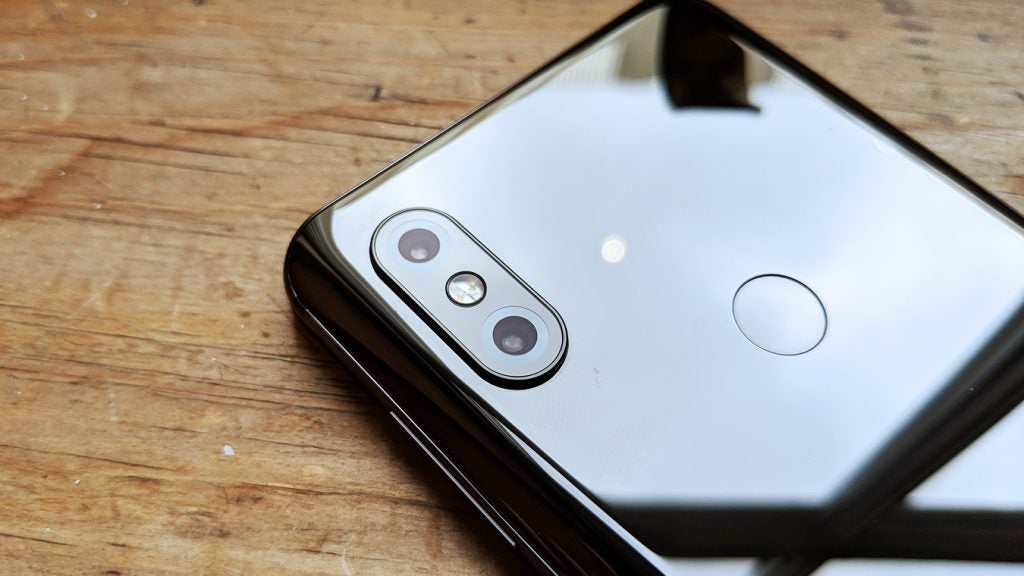
Related: Best camera phones
In general shooting, you’ll see much greater dynamic range and detail from the main 12-megapixel sensor compared to the secondary 2x zoom sensor, something that’s more exaggerated if you try using that lossless zoom in low light conditions.
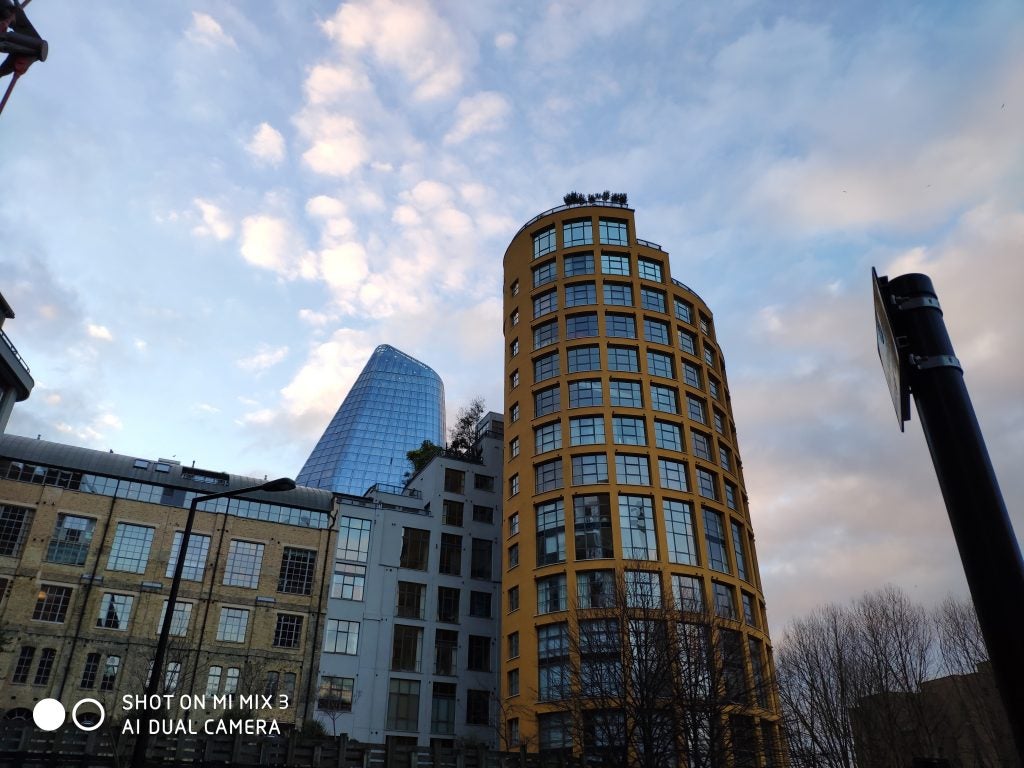
The camera is set to watermark photos by default. Head to the settings menu to disable them

There’s a dip in quality when using the phone’s lossless zoom but it’s still pretty good
Image quality is superb overall, with the optional AI assistance doing little in the way of improving the base image, sometimes adversely flattening out contrast and softening colours incorrectly – best to keep it off, based on my experiences. It’s up there with the likes of the Huawei Mate 20 Pro, at least when shooting in natural lighting.

HDR (below) isn’t enabled by default but it doesn’t appear to add any real shutter lag if you prefer to leave it on

Low light shooting is particularly impressive for a phone at this price, especially if you switch to Night Mode. Shots take longer to capture but it’s unquestionably the better option when the lights go down. The level of detail and colour information that this mode retains make it invaluable.

You’ll get far greater detail, colour and less noise when using Night Mode (below)

Switch over to video and the Mi Mix 3 is also equipped to record up to 4K video at 60fps, an impressive feat for any smartphone. Stabilisation at that resolution and frame rate is an unexpected bonus, even if it isn’t as capable compared to footage shot at a lower resolution.

Photos in artificial light (above) still look pretty great and the phone takes pleasing macro shots (below) too

The inclusion of that dual front-facing camera sensor bodes well for selfie lovers, not least because the Mi Mix 3 is equipped to do some pretty smart snapping. The phone’s secondary front sensor provides depth data that allows for artificial background bokeh in shots, but this isn’t just relegated to stills alone. It can, in fact, be applied to video footage too. There’s also a front-facing LED flash to help in low light situations.

A standard selfie (above) and portrait mode (below)


Maxing out the beauty tools can create some disturbing results
The depth data captured also allows for adjustable background blur that you can change after the fact, as well as virtual studio lighting and an unprecedented number of beauty controls, meaning you can digitally sculpt your face to the nth degree.
Battery life
The 3200mAh cell in this phone is a reliable unit that’s equipped to deliver a day and a half of fairly heavy use – great for any phone, but especially one that’s also equipped to accommodate more demanding 3D games and apps.
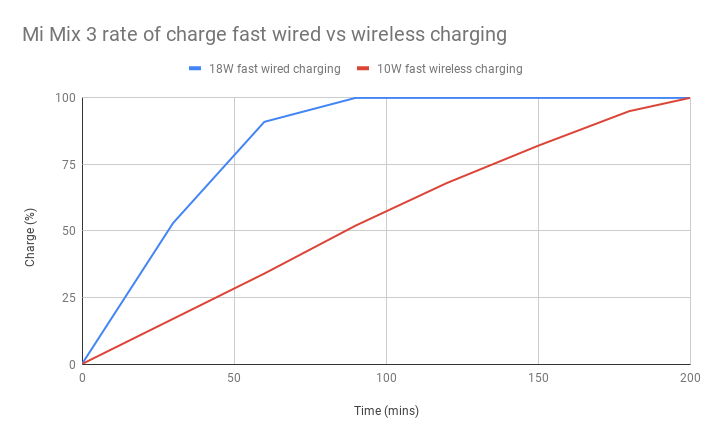
It mustered an exceptional five hours of screen-on time, with more than an hour’s Netflix streaming over 4G and about the same amount of time spent gaming. 30 minutes of Netflix playback only drained the phone’s battery by 4 percent, while 30 minutes of gaming (testing titles like Alto’s Odyssey and Crash of Cars) sapped 8% of the phone’s power.
If good endurance wasn’t enough of a blessing, the Quick Charge 4+-compatible phone also comes with an 18W fast charger and a 10W fast wireless charging pad in-box. You can power the Mi Mix 3 back up to over 50% charge after just 30 minutes and the phone can reach back up to 100% power again in under 90 minutes.
As for the wireless charging pad, it’s understandably slower but still convenient, letting me completely replenish my Mi Mix 3 in three hours.
Why buy the Xiaomi Mi Mix 3?
The Xiaomi Mi Mix 3 is an unquestionable looker, with a sliding mechanism that’s better engineered for real-world use than some of its motorised competitors.
High-end materials and excellent build quality lend themselves to the overall premium feel this phone offers and the performance, camera capabilities and impressive battery capabilities only elevate the overall standing of Mi Mix 3 in my eyes. At £499, it’ll serve as a great flagship option for those after something that’s a little different, without sacrificing substance for style.
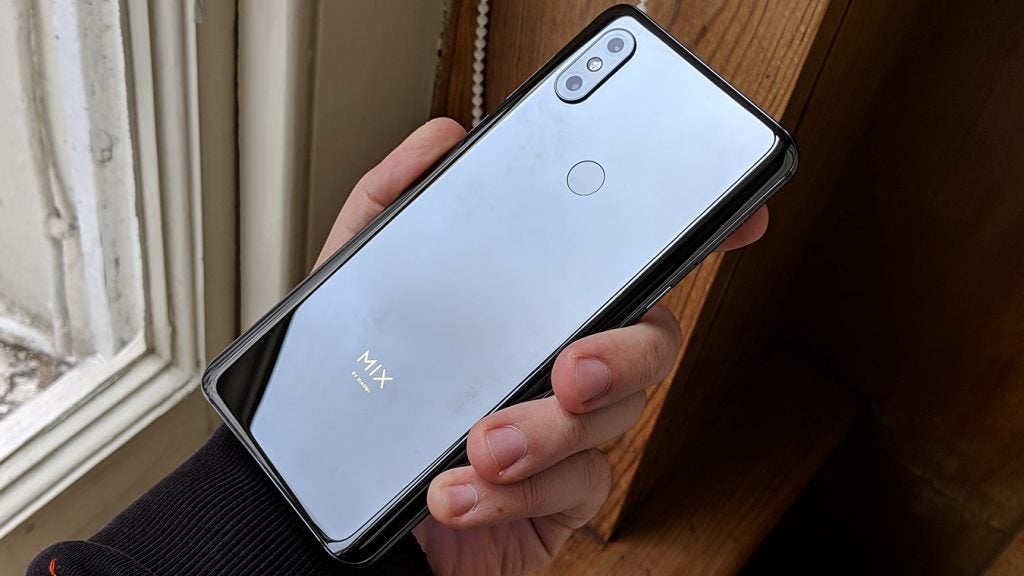
That said, the phone’s signature mechanism does present prospective Mi Mix 3 owners with a conundrum. Firstly, its inclusion means you have to be willing to live with the added bulk and weight the other phones with a similar screen size don’t suffer from, not to mention the vulnerability to dust, dirt and water ingress that this phone has no defence against.
There’s also the matter of relevance. The Mi Mix 3 is clearly a great device but it’s designed to solve a problem (offering a notch-free, near bezel-free screen) that newer handsets like the Honor View 20 have found a far simpler solution to.
Verdict
The Xiaomi Mi Mix 3 is an impressively high-end device with great all-round capabilities, an interesting, premium design and an aggressively low price tag. However, its unique design solves a problem that newer competitors have managed to do far more efficiently.
How we test phones
We test every mobile phone we review thoroughly. We use industry standard tests to compare features properly and we use the phone as our main device over the review period. We’ll always tell you what we find and we never, ever, accept money to review a product.


